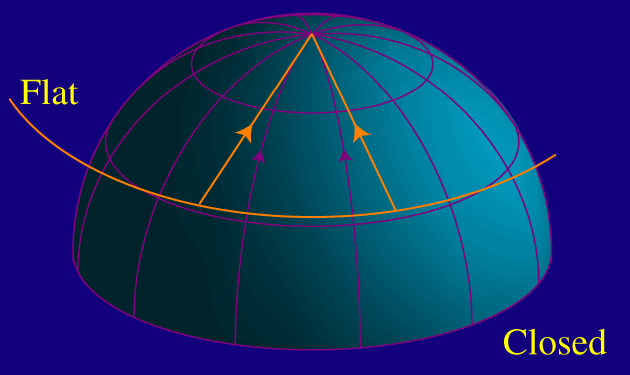

The alert reader will note that this argument shoves one thing under the rug. The usual use of comparing physical to angular size is to measure the distance to an object. Think about how you might judge the distance to an on coming car at night. You look at how far in angle the headlights are separated and knowing how wide a car typically is, you intuitively infer its distance. You would be thought strange if hypothesized a giant magnifying lens in between making the headlight separation look larger! So how is that we measure mainly the curvature of the universe and not the distance to recombination? Fortunately for us, the ambiguities in the distance scale out since they change the distance sound can travel before recombination and the distance CMB light can travel after recombination in the same way. That's just like redefining what you mean by a meter and doesn't affect angular scales at all. The residual effects are small as we shall see later but are currently a subject of great interest.Finally, you should be aware that there is a difference between spatial curvature and curvature of space-time. Even if space is flat, that the universe is expanding at all is evidence that Einstein was right about space-time being curved!